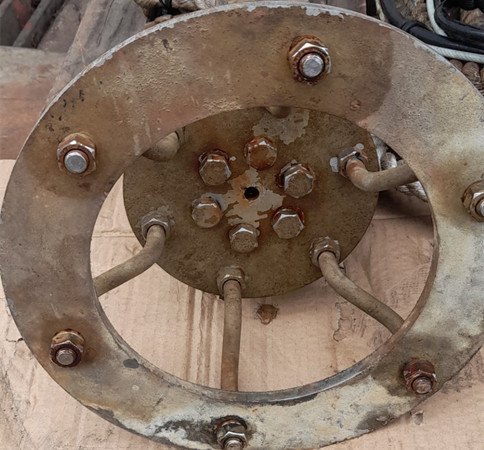How to Handle Physical and Chemical Corrosion in Industrial Instruments
In modern production, automation equipment is essential for the smooth and efficiency of production systems. However, as production and automation levels increase, the issue of corrosion in chemical instruments becomes more prominent, presenting a significant challenge that needs urgent resolution within the instrument industry.
Types of Corrosion in Chemical Instruments
Corrosion occurs when metals react with environmental moisture and gases, altering the metal’s surface and internal properties and damaging its functional structure. In the petrochemical industry, chemical instruments and their components are prone to physical, chemical, and electrochemical reactions with the external environment, leading to damage.
1. Physical Corrosion
This type of corrosion is caused by mechanical forces and physical dissolution, leading to the deterioration of the metal material in chemical instruments.
2. Chemical Corrosion
Chemical reactions between the instrument’s metal materials and external gases, such as oxidation-reduction reactions, lead to chemical corrosion. For instance, chlorine gas reacting with iron in instrument components forms ferrous chloride, causing corrosion.
3. Electrochemical Corrosion
This is the most common type of corrosion in chemical instruments. Strong acids, bases, and other corrosive substances in chemical environments can cause galvanic reactions when the instrument’s metal materials come into contact with electrolytic solutions, leading to rapid corrosion and the formation of deposits that affect the instrument’s accuracy.

Common Anti-Corrosion Methods for Chemical Instruments
Frequent instrument failures due to corrosion increase operational and maintenance costs for companies. Effective anti-corrosion methods used in the chemical industry include gas isolation, liquid isolation, and diaphragm isolation.
1. Gas Isolation
This method fills the pressure transmission line with air, preventing direct contact between the measured pressure medium and the instrument, protecting it from damage. It is commonly used with pressure transmitters for low or absolute pressure measurements.
2. Liquid Isolation
Used for measuring media like hydrochloric acid, nitrogen oxides, and chlorine gas, this method involves filling isolation tanks with perfluorotributylamine or other isolation liquids. However, potential chemical reactions between the measured and isolation media, high costs, and cumbersome application methods limit its widespread use.
3. Diaphragm Isolation
Diaphragms made from polytetrafluoroethylene (PTFE) are used to isolate corrosive media from the sensing elements. PTFE’s high lubricity, temperature resistance, weather resistance, corrosion resistance, and low friction make it an ideal material. This method effectively prevents corrosion, maintains measurement accuracy, and reduces production costs.
Daily Anti-Corrosion Maintenance for Chemical Instruments
1. Proper Material Selection
Choosing materials with strong corrosion resistance is crucial. The material must also suit the instrument’s working environment, cost considerations, and availability. Performance characteristics such as mechanical and physical properties are vital to ensure the instrument’s functionality.
2. Adding Protective Layers
Protective layers can be metallic (e.g., spraying, electroplating) or non-metallic (e.g., paints, acid-resistant cements). Non-metallic protective films can also be formed through chemical treatments.
3. Using Isolation Liquids
Effective in preventing direct contact between corrosive media and the instrument, isolation liquids should be non-reactive and maintain stable properties under temperature changes. Common isolation liquids include glycerin-water solutions for oil and hydrocarbons, ethanol for propane and butane, and methyl silicone oil for various gases and liquids.
4. Diaphragm Isolation
Corrosion-resistant diaphragms separate the isolation or filling liquid from the measured medium, ideal for strong corrosive media. This method is typically used for pressure measurements.
5. Blowing Method
Introducing air or inert gases to isolate corrosive effects on the instrument’s measurement components. This method is also used to prevent clogging in pressure transmission lines.
Conclusion
By choosing the right material and implementing proper anti-corrosion measures, we can ensure the longevity and accuracy of our instruments, ultimately enhancing operational efficiency. Not sure how to select the right material for pressure level sensors, flowmeters, digital display and controllers, reach out to us today for professional suggestions.
Related Posts
What are the Signs of Corrosion
Comprehensive Guide to Storage Tank Types and Measuring Instrumentation





